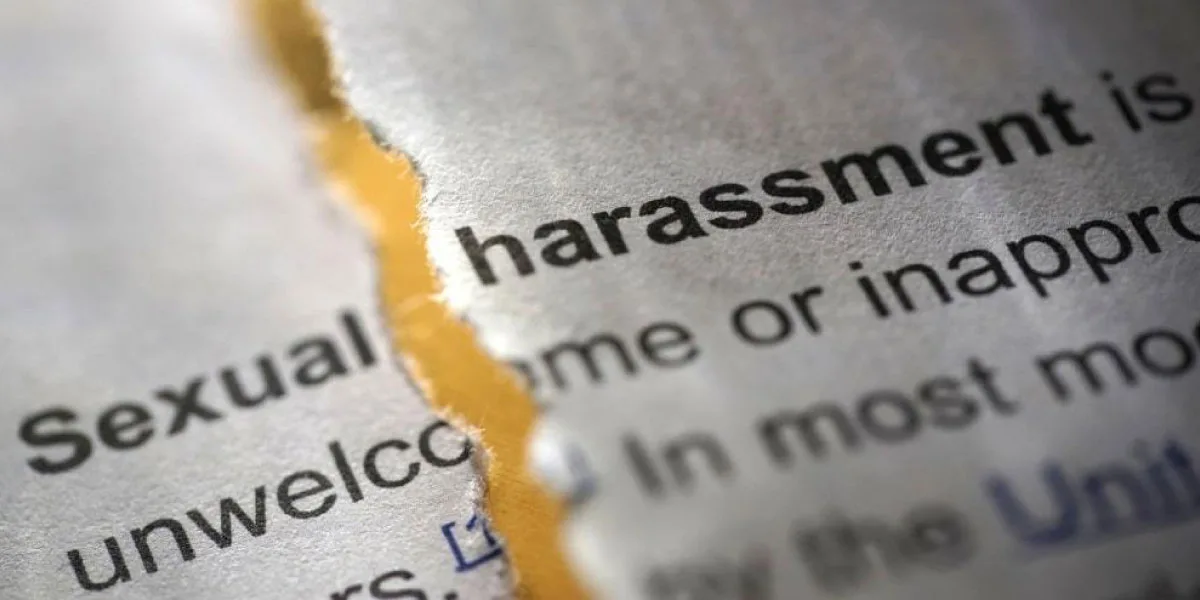Respect@Work – National Inquiry into Sexual Harassment in Australian Workplaces by the Australian Human Rights Commission.
What was the inquiry about?
In March 2020, following an 18-month inquiry, Sex Discrimination Commissioner Kate Jenkins handed down the Australian Human Rights Commission’s report of the National Inquiry into Sexual Harassment in Australian Workplaces, Respect@Work.
The Commission was tasked with reviewing and reporting on workplace sexual harassment and making recommendations about matters which included:
- the prevalence, nature and reporting of sexual harassment in Australian workplaces, and
- existing measures to address sexual harassment and examples of good practice.
The Commission reports that sexual harassment in the workplace is “prevalent and pervasive” and occurs “in every industry, in every location and at every level”. The reported statistics are that 39% of women and 26% of men in the workforce report that they have been sexually harassed in the workplace. In addition to the personal costs, there are very real financial impacts, including from lost productivity and staff turnover.
Report highlights
For workplace investigators, the Commission’s consideration of how employers can respond to reports of workplace sexual harassment, the standard of proof used in investigations and the engagement of external workplace investigators are of particular interest.
We have waded through 995 pages of the extremely comprehensive report to bring you the highlights relating to workplace investigations.
You’re welcome!
A victim-centred approach
The report describes existing approaches for preventing and responding to workplace sexual harassment – unchanged for decades – as inadequate. The Commission recommends a new framework described as:
- victim-centred
- practical
- adaptable for businesses of all sizes in all industries
- designed to minimise harm to workers.
This framework is described as requiring a new, more holistic approach that looks beyond policies, training and complaint-handling procedures, and that recognises that sexual harassment is primarily driven by gender inequality and power imbalance.
The proposed framework is structured around seven domains of prevention and response:
- Leadership – developing strong leadership that promotes a culture that does not accept sexual harassment (right up to Board level)
- Risk assessment and transparency – focusing on identifying and assessing risk
- Culture – building a culture of trust and respect through the use of HR policies and practices
- Knowledge – training on appropriate workplace behaviours and processes.
- Support – prioritising workers’ wellbeing and providing support before, during and after any formal process
- Reporting – providing workers with options to make a report of sexual harassment and creating ways for employers to address the issue without conducting a formal investigation
- Measuring – collecting data on the prevalence, nature and reporting of workplace sexual harassment to better understand and address it.
A critical element of this new framework is the victim-centred approach. The first reaction of an organisation faced with a serious sexual harassment complaint, particularly one against a senior leader, can often be to protect that leader or ‘minimise the blow’ to some extent, possibly as the risks faced by the accused are often shared by the organisation at a reputational level. Adopting a victim-centred approach is therefore likely to involve a significant shift in approach for many organisations from minimising legal exposure and liability to victim welfare.
Workplace investigators will be assisted by the following principles of victim-centred work outlined in the report:
- listening to victims without interruption; following their lead; ensuring that the language used when speaking with victims is neutral, free from judgement or bias
- ensuring that investigation protocols (including interviewing techniques and communications during the investigation process) are designed to minimise harm to victims and respect their preferences; prioritising safety, privacy and wellbeing of victims; never blaming victims for the harassment they have experienced
- anticipating the distress that sexual harassment causes and recognising and accommodating the fact that this may cause victims to temporarily or permanently withdraw from work life or employment.
Drawing on guidance recently published by UN Women (the United Nations entity dedicated to gender equality and the empowerment of women), the Commission sets out nine core elements of a victim-centred approach to responding to reports of workplace sexual harassment:
- Give control to the victim, to make or not make a report. If they do choose to report, allow them to do so at a time and in a manner appropriate for them.
- Clarify issues of privacy and confidentiality as soon as possible and preferably before details are shared, so that victims are aware of how their report will be treated.
- Ask and listen without judgement and show sympathy.
- Keep the victim informed throughout any process and before any action is taken.
- Ensure wellbeing, protection and safety of the victim, including understanding the trauma that victims can experience and how and when symptoms of that trauma may present.
- Ensure timeliness in communications and investigations (if conducted).
- Ensure equal treatment of the victim and the alleged harasser in any process (including investigation) including access to support, leave with pay, information and rights to appeal.
- Offer the victim a range of administrative adjustments, should they wish, such as paid time off work or the option to temporarily work in another location away from the alleged harasser.
- Make no assumptions about the truth or otherwise of the report. Convey an openness about what may have happened, which should include the possibility that the report is accurate. Importantly do not adopt the criminal justice system approach of beginning from an assumption of innocence of the accused.
These are sound guiding principles in any workplace investigation, not just those involving reports of sexual harassment.
The Commission notes that giving priority to the welfare of the worker who has made the report by providing suitable support is consistent with an employer’s WHS obligations. That support, for all involved, should be ongoing throughout an investigation process.
To investigate sexual harassment claims formally, or not?
The Commission reports that “[m]any employers appeared to operate from the misguided assumption that a formal investigation is the ‘best’ or only legally sanctioned way to respond to a report of sexual harassment”. However, a comprehensive investigation may not be appropriate in every case.
The Commission heard from workers that wanted their employer to provide them with other options to respond to sexual harassment swiftly and in a more low-key fashion, but there was little evidence of employers engaging in such practices.
Don’t delay
If you do decide to conduct an investigation, it should be conducted in a timely and efficient manner as generally better evidence will be available and there is a greater chance of preserving workplace relationships. The Commission heard from victims of workplace sexual harassment that unreasonably lengthy investigation processes had exacerbated the damage that had already been caused by the sexual harassment and placed strain on the victims, witnesses and their families.
One study referred to by the Commission indicated that a timely and considerate response by an employer to a sexual harassment complaint may also reduce any reputational damage to the employer associated with the complaint.
Standard of proof in sexual harassment investigations
Some victims shared with the Commission that they were reluctant to report sexual harassment because of the high standard of proof that would be used (ie that the victim would not be believed and the onus would be on them to prove they had not encouraged the harasser). Various submissions suggested that in many internal investigations a criminal burden of proof (that is, beyond reasonable doubt) is applied when making findings as to whether sexual harassment took place as reported.
The Commission states that sexual harassment investigations in the workplace are not criminal proceedings and that criminal standards of proof (ie beyond reasonable doubt) are not appropriate in non-criminal proceedings. Workplace investigations are not criminal proceedings (regardless of whether separate criminal proceedings are brought against the alleged harasser). The appropriate standard of proof is the civil standard (ie the balance of probabilities).
Independent workplace investigations
Complexity, lack of expertise in-house or the potential for perceived bias due to personal relationships are all reasons that may lead an employer to engage an external investigator to conduct an independent investigation into a report of sexual harassment in the workplace.
The report lists a number of the potential benefits of engaging an external workplace investigator including:
- it eliminates conflicts of interest and biases caused by personal relationships
- faster outcomes for workers and the employer
- it creates trust in the investigation process
- it can result in a fairer process for victims
- the investigator often has more specialised skills and expertise than in-house staff.
The Commission notes that a comprehensive investigation may not be appropriate in every matter. Also, in some cases, an external investigator may not be best placed as they ”may not always have a full understanding of the circumstances and dynamics of a particular relationship, workplace or even industry”.
Background to the Inquiry
The Commission’s stated aim in making recommendations was to make a significant contribution to reducing workplace sexual harassment and creating safer, more respectful and productive Australian workplaces.
The Commission was tasked with reviewing and reporting on workplace sexual harassment and making recommendations about:
- its prevalence, nature and reporting in Australian workplaces;
- the role of technology;
- its drivers, including risk factors for particular population groups or in different workplace settings;
- the current legal framework;
- existing measures to address it and examples of good practice; and
- its impacts on individuals and businesses, including its economic impact.





